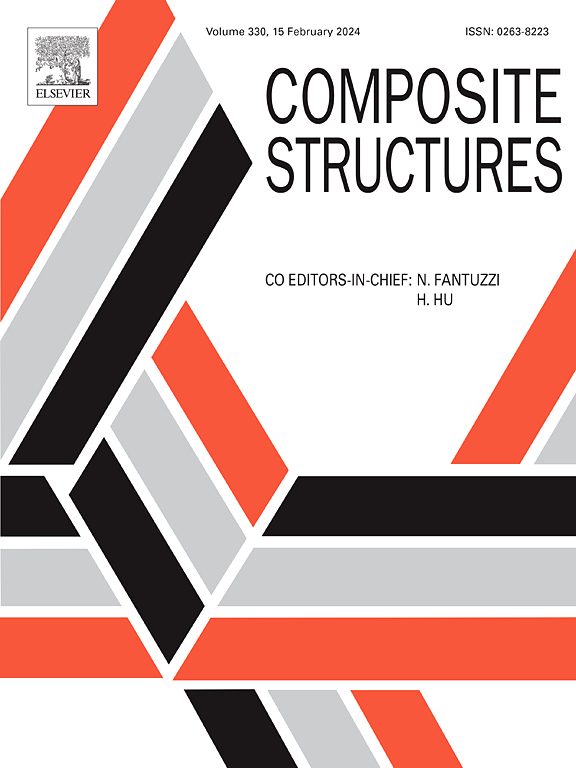Improved online secondary path modelling for multiharmonic active vibration control in shape memory polymer composites
IF 6.3
2区 材料科学
Q1 MATERIALS SCIENCE, COMPOSITES
引用次数: 0
Abstract
This manuscript introduces a new approach to active vibration control (AVC), which involves the application of enhanced online secondary path modelling through a modified filtered-x least mean squares (FxLMS) algorithm. A special feature of this proposed control method is the use of an original adaptive variable step size (VSS) LMS algorithm to adjust the secondary path modelling filter. The adaptive step size is dynamically adjusted based on the modelling filter error signal, which is continuously monitored using a single exponential smoothing technique. The incorporation of the fractional derivative with the steepest descent method enhances the convergence speed of secondary path identification. Based on numerical simulations employing multilinear spectral and random vibration signals, the proposed method demonstrates advantages in convergence speed, system stability and model accuracy compared to typical existing algorithms. Specifically, the system modelling convergence rate is improved by 60 %, and the residual error convergence rate is improved by 72 %. In practical terms, the adaptive algorithm was implemented in shape memory polymer composites (SMPCs) to accommodate configuration variations. Employing multiharmonic AVC with macro fiber composite (MFC) actuators, the dynamic behavior and vibration control efficiency of SMPCs with varying carbon fiber volume fractions were subjected to comprehensive experiments and analyses. Results from the study showcase the efficacy of the proposed adaptive control strategy in significantly damping vibrations in both the original and bent shapes of SMPCs, suggesting the versatility and robustness of the control approach across different configurations. Meanwhile, this study provides support for vibration control of SMPCs in dynamic applications.
求助全文
约1分钟内获得全文
求助全文
来源期刊

Composite Structures
工程技术-材料科学:复合
CiteScore
12.00
自引率
12.70%
发文量
1246
审稿时长
78 days
期刊介绍:
The past few decades have seen outstanding advances in the use of composite materials in structural applications. There can be little doubt that, within engineering circles, composites have revolutionised traditional design concepts and made possible an unparalleled range of new and exciting possibilities as viable materials for construction. Composite Structures, an International Journal, disseminates knowledge between users, manufacturers, designers and researchers involved in structures or structural components manufactured using composite materials.
The journal publishes papers which contribute to knowledge in the use of composite materials in engineering structures. Papers deal with design, research and development studies, experimental investigations, theoretical analysis and fabrication techniques relevant to the application of composites in load-bearing components for assemblies, ranging from individual components such as plates and shells to complete composite structures.
 求助内容:
求助内容: 应助结果提醒方式:
应助结果提醒方式:


